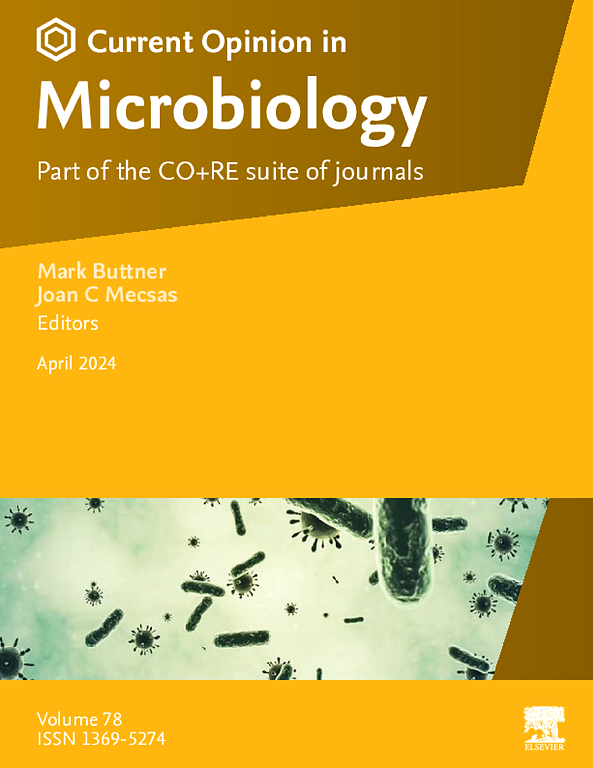为什么运输很重要:顶复合体寄生虫载体蛋白的最新进展
IF 7.5
2区 生物学
Q1 MICROBIOLOGY
引用次数: 0
摘要
分子在细胞膜屏障上的运动是每个生物体内细胞稳态的基础。这一重要的过程是通过一种机制多样的蛋白质来促进的,这些蛋白质统称为膜转运蛋白。其中包括所谓的载体蛋白,可以在被动和主动运输机制中发挥作用。它们表现出高底物特异性,并通过构象变化将特定的溶质转移到膜上,从而促进扩散或在能量消耗或既定的电化学梯度下主动运输分子。顶复合体寄生物投入高达5%的基因组来编码膜转运蛋白;然而,只有少数被完全描述,其具体机制在很大程度上仍然未知。结构生物学的最新进展和最先进的基因组编辑工具的应用极大地加速了对顶复合体载体蛋白复杂机制的研究。了解膜转运蛋白的分子“来龙去脉”对于合理设计抑制剂以及克服抗菌素耐药性至关重要。本文章由计算机程序翻译,如有差异,请以英文原文为准。
Why transport matters: an update on carrier proteins in Apicomplexan parasites
The movement of molecules across the membranous barriers of a cell is fundamental to cellular homeostasis in every living organism. This vital process is facilitated through a mechanistically diverse class of proteins, collectively known as membrane transporters. Among these are so-called carrier proteins that can function in passive and active transport mechanisms. They exhibit high substrate specificity and undergo conformational changes to transfer a specific solute across the membrane, thereby facilitating diffusion or actively transporting a molecule under energy expenditure or against an established electrochemical gradient. Apicomplexan parasites invest up to 5% of their genome to encode for membrane transporters; however, only a few have been fully characterised, and their specific mechanisms remain largely unknown. Recent advances in structural biology and the application of state-of-the-art genomic editing tools have greatly accelerated investigations into the intricate mechanisms of Apicomplexan carrier proteins. Understanding the molecular ‘ins and outs’ of membrane transporters is fundamental to inform the rational design of inhibitors, as well as to overcome antimicrobial resistance.
求助全文
通过发布文献求助,成功后即可免费获取论文全文。
去求助
来源期刊

Current opinion in microbiology
生物-微生物学
CiteScore
10.00
自引率
0.00%
发文量
114
审稿时长
6-12 weeks
期刊介绍:
Current Opinion in Microbiology is a systematic review journal that aims to provide specialists with a unique and educational platform to keep up-to-date with the expanding volume of information published in the field of microbiology. It consists of 6 issues per year covering the following 11 sections, each of which is reviewed once a year:
Host-microbe interactions: bacteria
Cell regulation
Environmental microbiology
Host-microbe interactions: fungi/parasites/viruses
Antimicrobials
Microbial systems biology
Growth and development: eukaryotes/prokaryotes
 求助内容:
求助内容: 应助结果提醒方式:
应助结果提醒方式:


